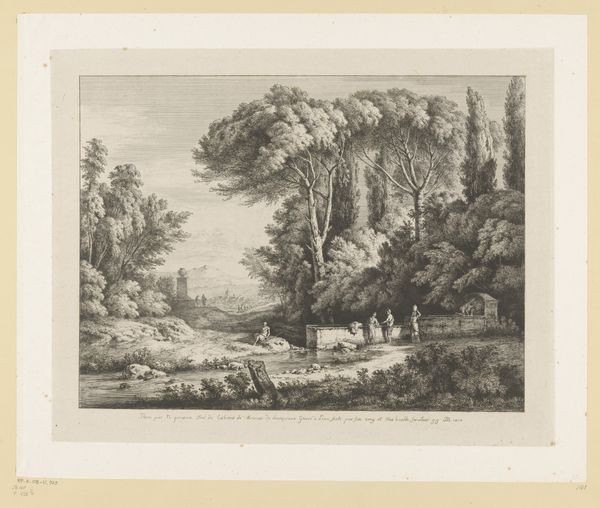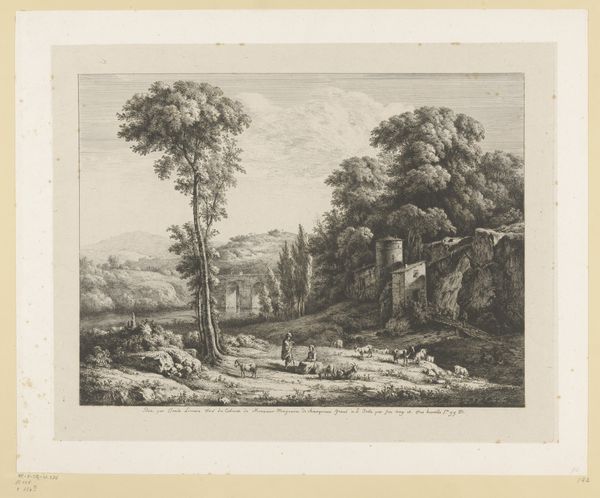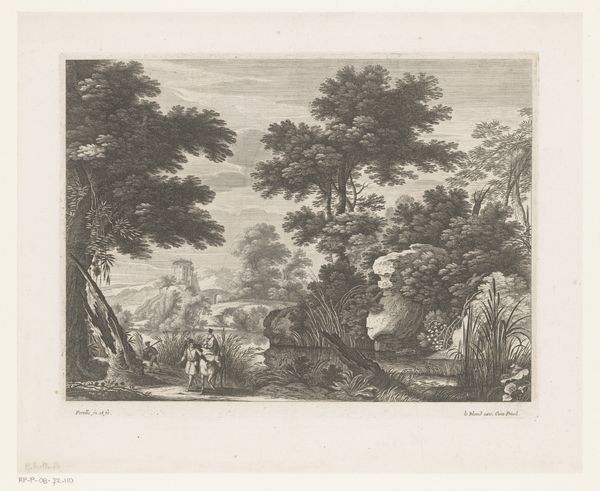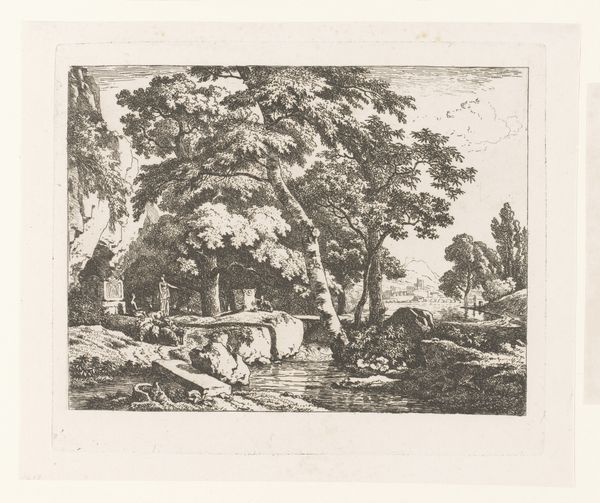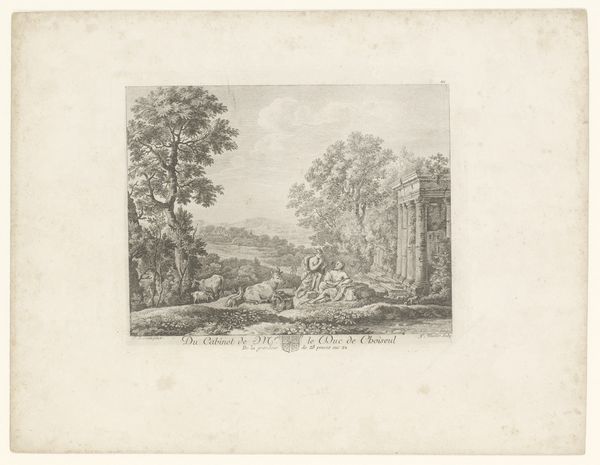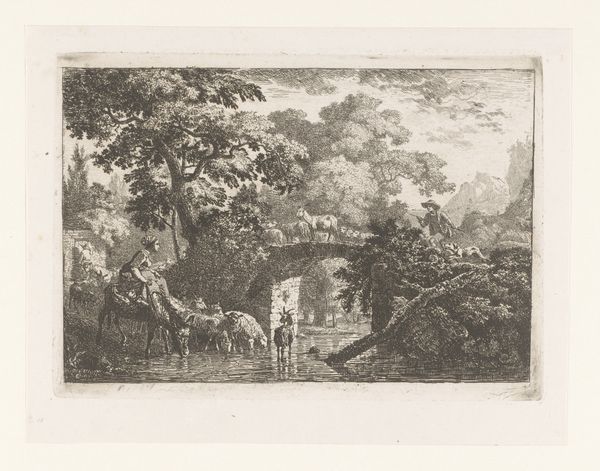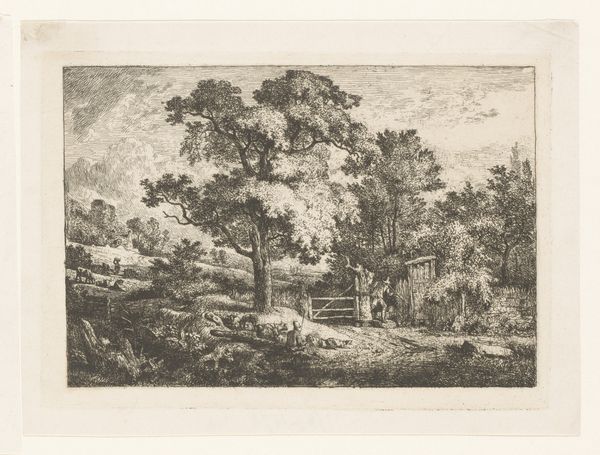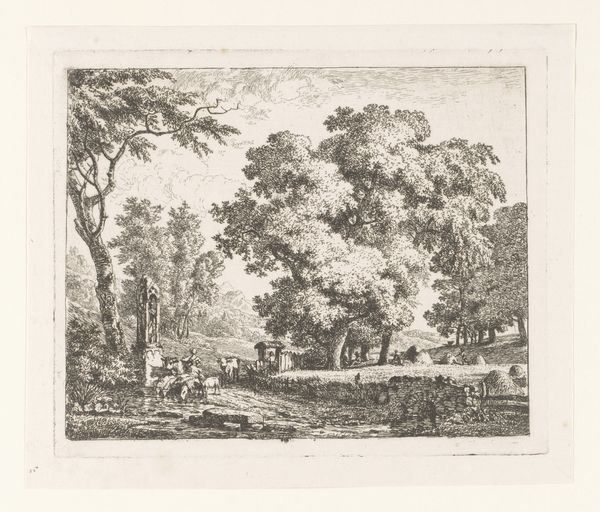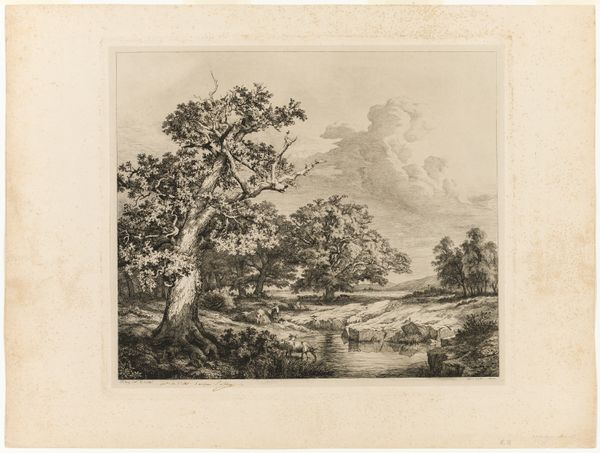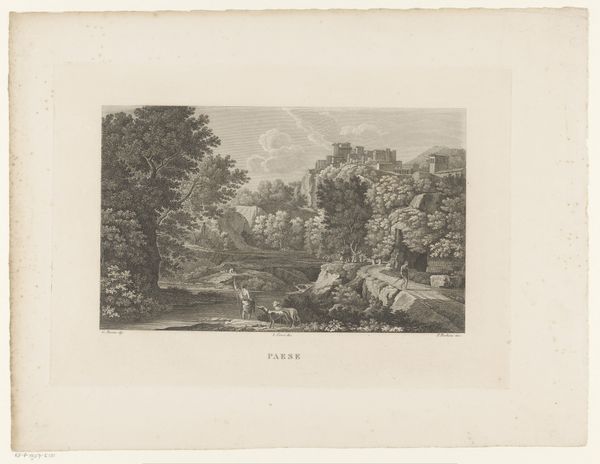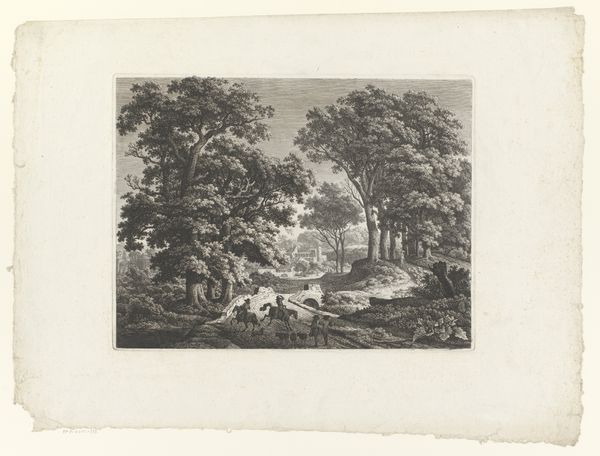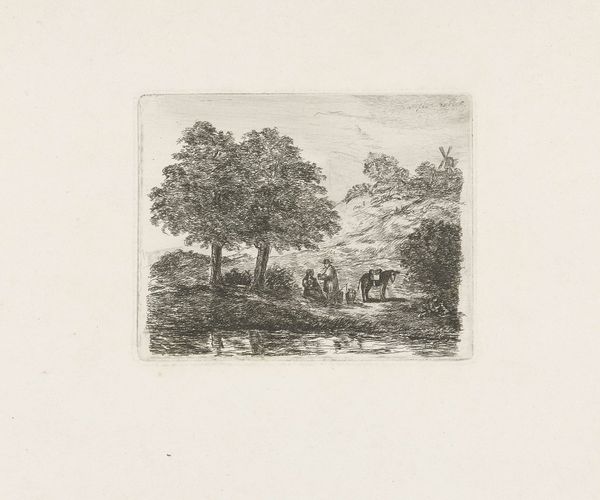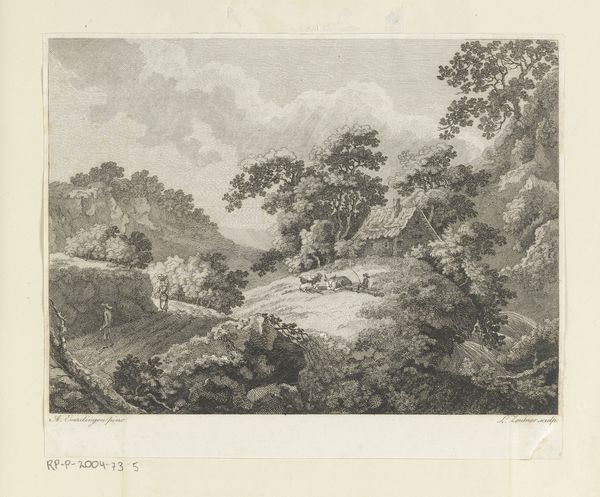
etching
#
etching
#
old engraving style
#
landscape
#
romanticism
#
genre-painting
#
history-painting
Dimensions: height 148 mm, width 182 mm
Copyright: Rijks Museum: Open Domain
Curator: Immediately, I’m struck by the stillness—an almost palpable calm settles over the entire scene. The limited palette enhances the feeling, no? Editor: This etching, entitled "Landscape with Man and Woman in a Meadow with Three Cows", comes to us from Jean Louis Demarne. The work likely dates from sometime between 1762 and 1829, slotting it comfortably within a Romantic tradition. Curator: Definitely a touch of Romanticism here—nature idealized, almost theatrical. What resonates with me are the cows; their placid grazing underscores a kind of Arcadian ideal, a return to simple living. But I also wonder about the darker undercurrents. Notice the dead tree; such motifs can speak volumes about life's ephemerality. Editor: Symbolically, the pastoral scene here is fascinating. Cattle in art often represent prosperity and abundance, reflecting a cultural yearning for stability—yet their close proximity to the figures raises questions about human dominion over nature, or even perhaps a unity. Consider how that resonates given shifts toward agrarian reform within that period? Curator: An interesting point! Were such artworks serving as idealized representations, or were they shaping societal expectations, prescribing particular relations to the land? Also, how do we reconcile this rather simplistic, quiet depiction with the broader socio-political turmoil brewing in Europe at the time? Did idyllic escapism serve as propaganda, either subtly or consciously? Editor: Certainly, landscape imagery gains significance by examining historical trends. Yet one cannot neglect the basic emotional pull inherent to landscape: the desire to commune with something beyond human drama. Look how deliberately Demarne leads the eye into the distance! Even those distant rocks suggest both freedom and grandeur. Curator: So it’s the timeless interplay between human longing and societal construction, each enriching the other. I will be looking for depictions of similar imagery from this period during my next collection review. Editor: And perhaps by understanding the symbolic power vested in even 'simple' scenes, we see deeper undercurrents that challenge such seemingly straightforward portrayals. That makes examining these depictions essential to comprehending culture.
Comments
No comments
Be the first to comment and join the conversation on the ultimate creative platform.
